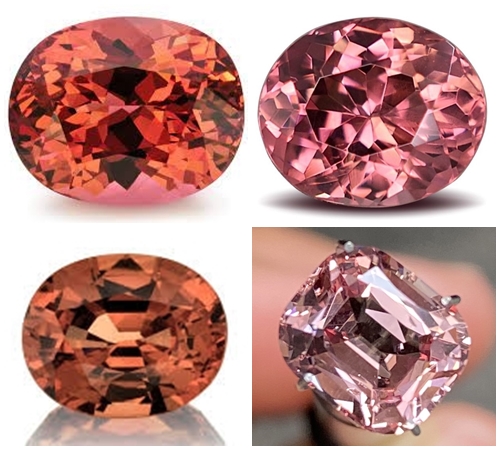Unveiling the Splendor of Malaya Garnet: A Gem of Endless Beauty and Spiritual Significance
Introduction:
Malaya garnet, alternatively known as Malaia garnet, stands as a gemstone of exceptional beauty and profound spiritual significance. Emerging from the depths of East African gemstone mines, Malaya garnet captivates the senses with its stunning array of colors and unparalleled radiance. Beyond its aesthetic allure, Malaya garnet holds a rich tapestry of metaphysical properties and transformative benefits, making it a cherished gemstone among spiritual seekers and gem connoisseurs alike. In this comprehensive guide, we embark on a journey to uncover the origins, characteristics, and mystical attributes of Malaya garnet, shedding light on its enduring allure and timeless elegance.
Origins and Discovery:
The enchanting tale of Malaya garnet begins in the late 20th century when gem miners in East Africa stumbled upon a remarkable variety of garnet with captivating color characteristics. Named after the Swahili word for “outcast” or “out of the family,” Malaya garnet initially baffled gemologists due to its unconventional hues and composition. Over time, however, Malaya garnet emerged as a unique and coveted gemstone, prized for its vibrant colors and exceptional clarity. Today, Malaya garnet is primarily sourced from gemstone mines in Tanzania and Kenya, where it continues to enchant gem enthusiasts with its mesmerizing beauty.
Characteristics of Malaya Garnet:
Malaya garnet is celebrated for its remarkable spectrum of colors, which range from warm tones of orange, pink, and red to earthy hues of brown and peach. This diverse palette of colors is attributed to the garnet’s unique chemical composition, which includes traces of manganese and other elements. Malaya garnet crystals often exhibit excellent transparency and clarity, allowing light to penetrate and reflect within the gemstone, creating a dazzling display of brilliance and fire. The gemstone’s allure lies not only in its vibrant colors but also in its versatility, making it a popular choice for a wide range of jewelry designs, from classic solitaire rings to intricate pendant settings.
Metaphysical Properties and Spiritual Significance:
In addition to its physical beauty, Malaya garnet is believed to possess potent metaphysical properties and spiritual significance. Throughout history, garnets have been revered for their healing and mystical qualities, and Malaya garnet is no exception. Here are some of the transformative benefits associated with Malaya garnet:
Energetic Cleansing: Malaya garnet is thought to have a purifying effect on the body, mind, and spirit, helping to clear away negative energies and emotional blockages. Its high vibrational energy uplifts the wearer’s mood and promotes a sense of clarity and well-being.
Creativity and Inspiration: Malaya garnet is believed to stimulate creativity and inspire innovation, making it a valuable tool for artists, writers, and creative thinkers. Its warm, vibrant colors ignite the imagination and encourage self-expression and exploration.
Self-Confidence and Empowerment: Malaya garnet is said to boost self-confidence and empower the wearer to overcome challenges and pursue their goals with courage and determination. Its radiant energy instills a sense of inner strength and resilience, enabling individuals to face life’s obstacles with grace and confidence.
Heart Healing: Malaya garnet resonates with the heart chakra, promoting emotional healing and harmony in relationships. It encourages forgiveness, compassion, and empathy, fostering deeper connections with oneself and others.
Manifestation and Abundance: Malaya garnet is associated with abundance and prosperity, helping to attract opportunities and resources into the wearer’s life. Its vibrant energy aligns with the law of attraction, enabling individuals to manifest their desires and achieve their goals.
Conclusion:
In conclusion, Malaya garnet stands as a gemstone of endless beauty and spiritual significance, offering a pathway to inner transformation and enlightenment. Whether adorned as jewelry or used in meditation and healing practices, Malaya garnet invites individuals to embrace their true essence and awaken to the infinite possibilities that lie within. With its vibrant colors, exceptional clarity, and profound metaphysical properties, Malaya garnet continues to captivate and inspire gemstone enthusiasts around the world. Embrace the radiant energy of Malaya garnet and embark on a journey of self-discovery and spiritual growth.





